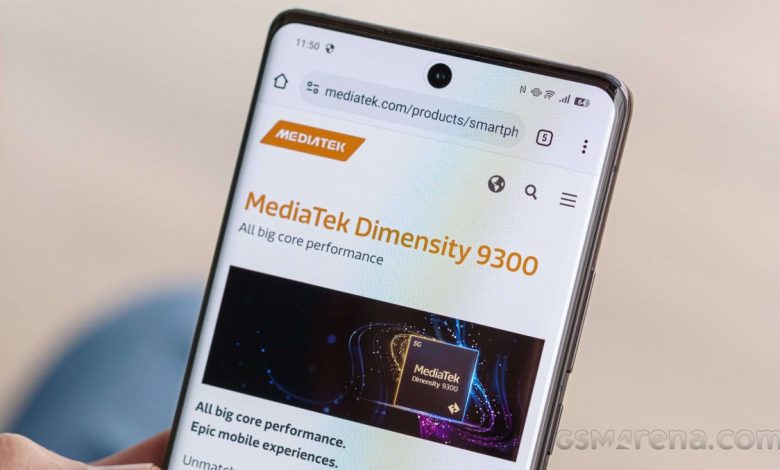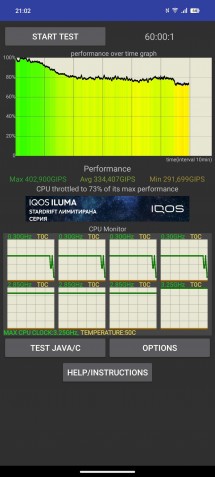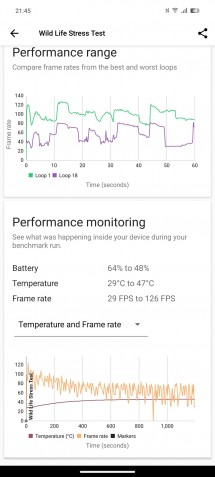Testing the Dimensity 9300 in the vivo X100 Pro – can it handle the heat?

The high-end vivo X100 Pro is the first to ship with MediaTek’s new Dimensity 9300 chipset – with a unique all-performance core processor that sparked a lot of debate – will it be able to sustain its performance or will throttling offset all the benefits.
We touched on that question in our full review and will answer it again here, read on.
The high-end Dimensity 9300 is manufactured on TSMC’s third-generation 4nm+ process and Mediatek says it offers a 40% improvement in peak performance compared to last year’s Dimensity 9200 while using 33% less power. Its CPU has four Cortex-X4 cores (one clocked at up to 3.25GHz and three at up to 2.85GHz) and four Cortex-A720 units (up to 2.0GHz).
To put that into perspective, the Snapdragon 8 Gen 3 has 1×3.3GHz Cortex-X4 & 5×3.2GHz Cortex-A720 & 2×2.3GHz Cortex-A520.
Back to the Dimensity, its GPU is the Immortalis-G720 MC12 and that’s a core more than the G715 MC11 in the Dimensity 9200 and two more than the G715s MC10 in the Pixel 8’s Tensor G3.
Now, how well does the MediaTek Dimensity 9300 manage its big powerful cores? One early test suggested a drop of 54% after 15 minutes in a CPU throttling test. We’re happy to report those numbers are inaccurate in our findings.
Our review unit’s performance dropped gradually over the first 15 minutes of the test to around 80%, where it stayed for a good 40 minutes, and then it dipped a tiny bit further, ultimately only dropping as low as 73% of its initial power. Quite a stable run, and in a way better than the Snapdragon 8 Gen 3 inside the iQOO 12 – review and test.
The GPU’s behavior was similar to that of the iQOO, and the X100 Pro returned a 55% stability rating in 3DMark compared to the 53% of the Snapdragon-powered phone.



CPU Throttling test • 3DMark Wild Life stress test
Overall, we’d say that at least in the X100 Pro’s implementation, the Dimensity 9300 is perfectly stable and quite beefy at the same time. The phone did heat up in the process of benchmarking, but not to an excessive extent. Pretty solid showing from the new Mediatek chip then.
Onto performance. In GeekBench, the X100 Pro is ever so slightly behind the iQOO 12 in the single-core test – the gap more or less illustrates the 3.25GHz vs. 3.30GHz clock speed difference on the prime Cortex-X4 cores.
In the multi-core test, the positions are swapped, and the gap grows to almost 6% in favor of the Dimensity-powered vivo. Compared to the Dimensity 9200+, represented here by the Xiaomi 13T Pro, the new chipset posts over 50% higher scores, which is at least a little bit impressive.
In Antutu 10, there’s virtually no difference between the vivo X100 Pro and the iQOO 12, both scoring 2,100K – over 40% higher than the Snapdragon 8 Gen 2 in the Galaxy S23 Ultra or the Dimensity 9200+ in the Xiaomi 13T Pro. The Tensor G3 in the Pixel 8 Pro managed just over half the Dimensity 9300’s score.
In GFXBench, the vivo consistently outscores the iQOO, if by a tiny margin. The Dimensity 9300 scores 20 to 30% higher than last year’s Snapdragons too.
It’s a bit less black and white in 3DMark, where the ray tracing Solar bay test gives the Dimensity 9300 a very slight edge over the SD 8 Gen 3, wins by a wider margin (14%) in the Wild Life Extreme test, only to lose in the simpler Wild Life by some 10%.
المصدر : Gsmarena .
المصدر : مجمع التقنية.
